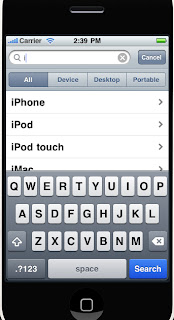Search the content of a UITableView in iphone?
.jpg)
Step 1: Create a Window base application using template . Give the application name “SearchTable”. Step 2: Xcode automatically creates the directory structure and adds essential frameworks to it. You can explore the directory structure to check out the content of the directory. Step 3: Now we’ll add UITableViewController class and NSObject class to the project. Choose New file -> Select cocoa touch classes group and then selectUITableViewController and NSObject . Give the name of the class MainView and Product. Create a MainView.xib file in the resource folder. Step 4: In the AppDelegate.h file we have added UINavigationController in the file. So make the following changes in the file. @interface SearchTableAppDelegate : NSObject <UIApplicationDelegate> { UIWindow * window; UINavigationController * navController; } @...
+file..jpg)